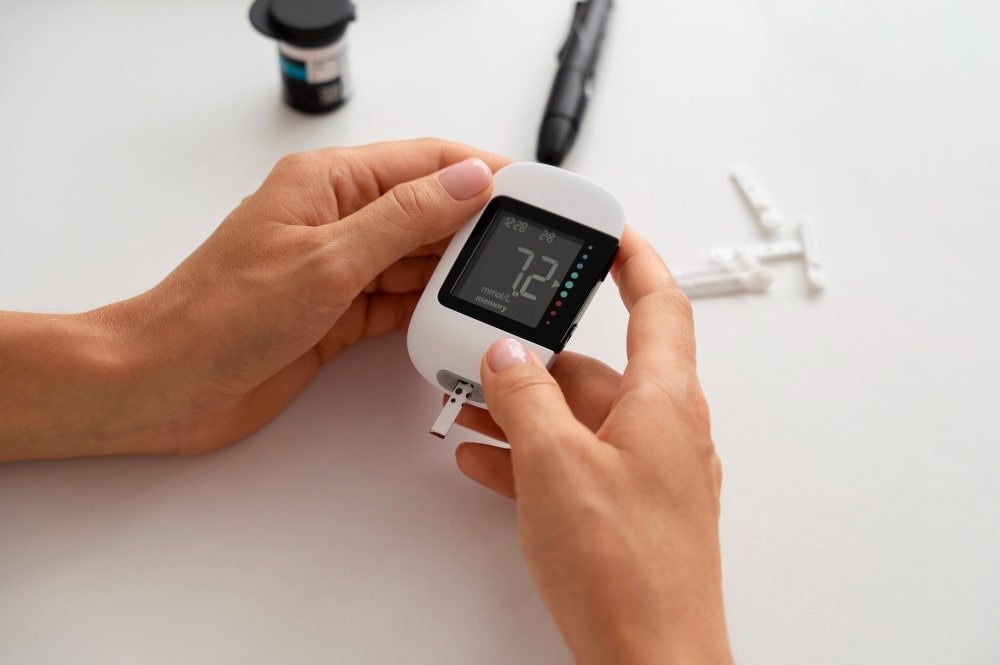Regular physical activity brings the greatest gains when you consider three key factors: intensity, duration, and frequency. Walking falls into the low-intensity category, so to reap its full rewards it’s best done for longer periods—or mixed with brief jogging intervals.
In fact, a landmark 2008 study in Preventive Medicine found that seniors who walked at least an hour daily saw a substantial drop in mortality rates compared to those who moved less.
1. Better Blood Sugar Control

- Type 2 diabetes prevention:
Walking briskly—even if you don’t walk for hours—lowers your odds of developing type 2 diabetes. A preliminary JAMA study on women showed that overall aerobic activity (including moderate walks) correlates strongly with reduced diabetes risk. - Immediate glucose improvements:
For people with diabetes or prediabetes, just 3 minutes of light walking (or simple resistance moves) every half hour can blunt blood sugar spikes and improve insulin sensitivity, according to a Diabetes Care trial.
2. Joint Health and Pain Relief
- Arthritis-friendly exercise:
Low-impact walking strengthens muscles around the joints, easing pressure and stiffness. Research in the Annals of Internal Medicine demonstrated that consistent walking programs can alleviate knee osteoarthritis pain—plus, any weight you lose removes extra load from your joints.
3. A Stronger Immune System
- A 2017 study in Medicine & Science in Sports & Exercise showed that 45 minutes of moderate exercise—or 60 minutes of brisk walking—five times a week can boost key immune proteins (immunoglobulins) by about 20%, while balancing lymphocyte counts.
4. Denser, Healthier Bones
- Postmenopausal women with osteoporosis who walked moderately one hour a day, four days a week for a year enjoyed measurable increases in lumbar spine bone density, according to Journal of Bone and Mineral Metabolism.
5. Eased Back Discomfort
- A systematic review in the European Spine Journal noted that regular moderate walking may help reduce back pain. Though more research is needed, walking is gentle on the spine and a great first step before exploring more targeted therapies—always after checking with your doctor.
6. Sleep That Really Restores
- Participants hitting 10,000 steps daily over four weeks saw significant improvements in sleep quality, longer total sleep time, and quicker onset of slumber (BMJ Open, 2016).
7. Heart Health and Blood Pressure
- Cardiovascular protection:
A meta-analysis of eleven studies found that just 30 minutes a day, five days a week, cut coronary disease risk by 19%. Each extra minute on your feet further lowers that risk. - Lower blood pressure:
Women in menopause who walked 3 km daily for 24 weeks saw notable drops in systolic blood pressure (Medicine & Science in Sports & Exercise, 2001).
8. Mood Boost and Mental Well-Being
- Stress and anxiety relief:
A Preventive Medicine study reported that either one 30-minute daily walk or three 10-minute walks each day raised VO₂max, reduced body fat, and significantly lowered tension, anxiety, and mood disturbance. - Easing depression:
Walking has shown meaningful reductions in depressive symptoms, though experts agree we need more data on the ideal walk length and pace.
9. Weight Management
- Calorie burn:
Brisk walking regularly helps create the calorie deficit needed for weight loss. Overweight individuals capable of walking can torch meaningful calories, as confirmed by research in The Journal of Strength & Conditioning Research.
10. Women’s Health Perks
- Menstrual relief:
Aerobic activities like brisk walking—30 minutes at least three times weekly—can ease PMS symptoms (Iranian Journal of Nursing and Midwifery Research, 2013). - Skin glow:
Better circulation from regular walks delivers oxygen and nutrients to skin cells, helping battles stress-related conditions like acne or eczema. Just remember sunscreen if you’re out in the sun!
11. Getting the Most Out of Your Walk

- Set your pace:
- Low intensity: You can sing along easily—time to speed up.
- Moderate: You can chat, but you’re breathing more heavily.
- High intensity: Talking is tough—this is brisk walking territory.
- Build up safely:
Start with 5 minutes a few times per week and gradually extend to 30–60 minutes daily. This progression prevents injury and makes walking a sustainable habit. - Time of day matters less than consistency, but many find morning walks jump-start their energy, while post-meal strolls help curb blood sugar spikes. Experiment to see what fits your schedule—and stick with it.
Final Insight
Walking an hour each day is simple, free, and adaptable to any lifestyle. It packs multidimensional benefits—from metabolic health and joint comfort to mental resilience and longevity. Lace up your shoes, choose your favorite route or playlist, and make walking your daily ritual. Over time, you’ll notice not just a healthier body, but a sharper mind and a more positive outlook on life.






[…] Benefits of walking for blood sugar control […]
[…] Benefits of walking on mental well being […]
[…] The 11 Powerful Benefits of Walking One Hour Every Day […]
[…] The 11 Powerful Benefits of Walking One Hour Every Day […]